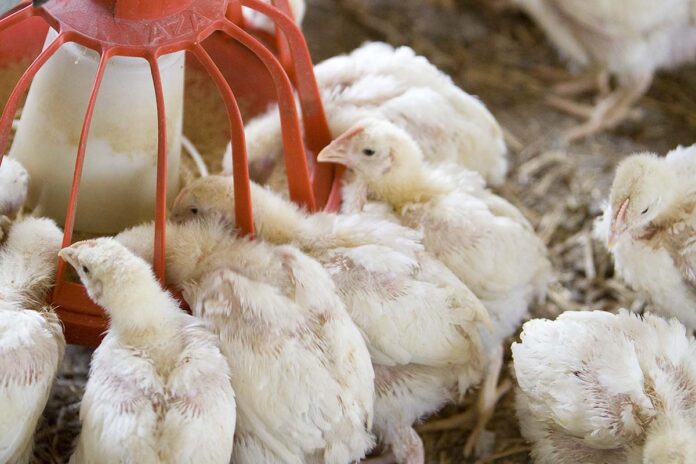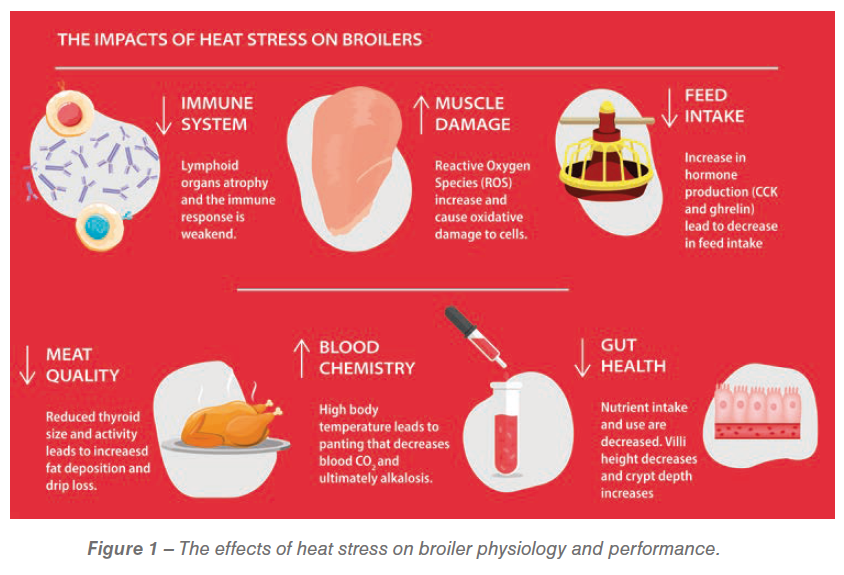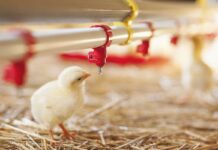
High temperatures can be an obstacle in livestock production particularly in tropical regions. Broilers are more susceptible to high ambient temperatures because they lack sweat glands to dissipate heat from their bodies. This article aims to explain nutritional strategies to help alleviate heat stress.
Suttisak Boonyoung, Ph.D., Nutritionist, Cobb Asia Pacific
Heat stress occurs when the ambient temperature is higher than the thermo-neutral zone. Heat stress can be classified into 2 main types based on the duration of exposure: short term (acute, less than 1 week) or long term (chronic, greater than 1 week). Heat stress can impact bird physiology and growth performance leading to welfare concerns and economic losses in broiler production. Any signs of heat stress should be addressed immediately. This article aims to explain nutritional strategies to help alleviate heat stress.
Heat stress impacts on broiler growth performance and physiology
The negative impacts of heat stress on broiler growth and physiology are shown in Figure 1. Heat stress can decrease feed intake and body weight. The reduction of feed intake is a mechanism to reduce metabolic heat production. In contrast, water intake increases which can negatively impact litter quality. At high body temperatures, a broiler’s respiratory rate will increase to promote evaporative cooling through panting. This reduces blood CO2 and causes respiratory alkalosis.
Heat stress also has an adverse impact on the immune system efficiency by reducing the lymphoid organ weights including the thymus, spleen and bursa of Fabricius. Nutrient usage is adversely impacted, which, in turn, may compromise gut health. In addition, heat stress often has a negative impact on meat quality by reducing muscle water holding capacity and increasing fat deposition and drip loss. Periods of high heat exposure lead to muscle breakdown to provide amino acid substrates for gluconeogenesis. Heat stress can also cause oxidative stress by elevating free radicals. Free radicals can damage intestinal cell membranes and vital components resulting in apoptosis, intestinal irritation, and leaky gut syndrome.
Nutrient and feed formulation strategies
Protein and amino acids
During heat exposure, proteins denature and protein synthesis is impaired. Moreover, the reduction of feed intake during heat stress causes lower protein and amino acid intake that will negatively impact growth. Selection of protein sources that are high in digestible protein and amino acids, can reduce the impact of heat stress by enhancing protein usage and reducing heat production during digestion. The ratio of each amino acid (Ideal amino acid) should be balanced to improve protein usage. The application of synthetic amino acids is one consideration to maintain balanced amino acids in the diet.
Dietary electrolyte balance (DEB) to prevent alkalosis
Electrolytes are solubilized compounds that help to maintain acid-base balance during periods of respiratory alkalosis. In broiler nutrition, the main electrolytes are sodium (Na), potassium (K) and Chlorine (Cl). Sodium chloride (NaCl) and Sodium bicarbonate (NaHCO3) are frequently used as Na and Cl in broiler diets and K is usually obtained from soybean meal. For Cobb diets, each mineral has a minimum requirement such as 0.16 to 0.23% for Na, 0.16 to 0.3% for Cl, and 0.6 to 0.95% for K (please refer to our broiler nutrition supplements for more details available at Cobb-Vantress.com). To maintain electrolyte balance, the diets must maintain the correct ratio of cations (Na, K) and anions (Cl).
Vitamins and minerals to bind free radicals
Vitamins and minerals have antioxidant properties that can reduce the negative impact of free radicals caused by heat stress. Vitamin E, a lipid-soluble vitamin at 100 to 250 mg/Kg can improve broiler growth performance during heat exposure. Even though birds can synthesize vitamin C from glucose in the kidneys, the supplementation of vitamin C at 200 mg/Kg in the diet can reduce the negative effects of heat stress. Selenium is an important cellular antioxidant and has a minimum requirement of 0.35 mg/Kg feed. This mineral also has a synergistic effect with vitamin E.
In general, the addition of vitamins and minerals 10 to 20% above the minimum requirement can help prevent nutrition deficiencies since feed intake can decrease under heat stress. Consult with your nutritionist before making any large adjustments in feed formulations.
Zinc can improve broiler performance and prevent lipid oxidation in muscle, and is important as dietary lipid can be easily oxidized at high temperatures. Lipid oxidation can be prevented by adding antioxidants to the diet (BHA, BHT and ethoxyquin).
Enzymes
Enzyme supplementation can improve nutrient digestion and reduce metabolic heat. There are many commercially available cereal-based enzymes. Such enzymes attack non-starch polysaccharides or NSPs. Most of the NSPs are in the cell walls of cereal grains such as wheat, corn, oats and even soybeans, and include xylans, beta-glucans and mannans. During hot weather, some nutritionists have had success using enzymes that target all three NSPs. Supporting feed digestion will lower heat production. Depending upon the enzymes available in specific regions, more than one enzyme product may be needed to target different NSPs.
Feed formulation and feed quality
Feed can be formulated to help alleviate the effect of heat stress. The partial replacement of energy sources from carbohydrates to lipids is a common practice because lipids generate a lower heat increment than carbohydrates. Lipids also have the benefit of slowing feed passage in the gut giving more time for nutrient digestion. The selection of quality ingredients containing a high ratio between net and metabolizable energy (NE/ME) is another option to reduce metabolic heat production.
Feed quality is another consideration to alleviate heat stress in broiler. Generally, broilers generate more heat and use higher energy for their eating activity when given mash feed compared to pelleted feed. So, good pellet quality can alleviate heat stress by reducing energy used during eating activity. Normally, fine pellets (<1000 um) should not compose more than 10 to 15% of the diet. The pellet durability index (PDI) should be higher than 95%. 
Other nutritional approaches
There are other feed additives that can reduce the impact of heat stress. Betaine is a methyl donor and can improve growth performance and meat quality. The supplementation of betaine at 1000 to 2000 mg/Kg feed improved feed intake and growth in heat stressed birds.
Probiotics and prebiotics are feed additives that can elevate gut health impaired by heat exposure. This will result in improved broiler growth performance. Phytogenic compounds such as Sanguinarine and curcumin were also reported to help manage heat stress conditions due to their anti-inflammatory and antioxidant properties. Evaluate any feed additive thoroughly before using it as a part of normal formulation.
Water management
Water plays many physiological roles in broilers. During heat stress, water is lost through the respiratory tract during periods of panting. In response, water intake is increased in broilers as a means of maintaining thermoregulatory. Water management during heat exposure is very important to reduce heat stress. Electrolytes and vitamins can be added into the drinking water including sodium bicarbonate, potassium chloride, and vitamin C. However, the addition of electrolytes via drinking water should be monitored to prevent wet litter conditions and biofilms in the water system. It is very important to monitor the temperature of the drinking water and keep it below 25 °C in hot environments.
Summary
Heat stress can cause issues for broiler performance and meat quality particularly in tropical areas. Nutrition and feed quality are partial strategies to alleviate the negative effects of heat stress. Farm management is also an important key to alleviating this issue. In total, heat stress must be addressed by a collective effort of management and nutrition.

















